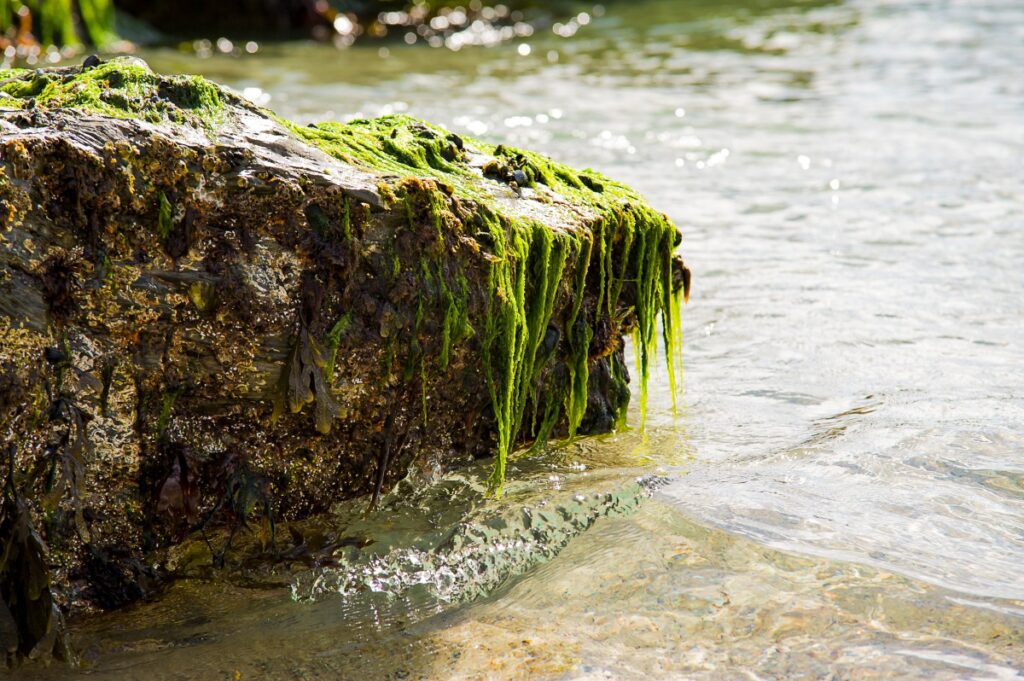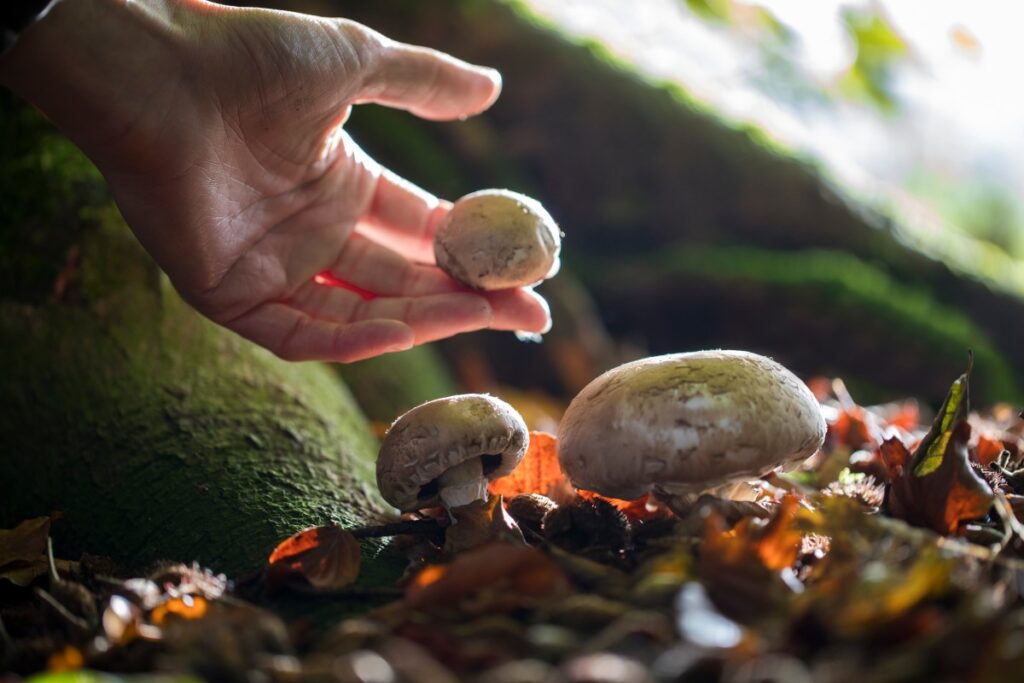
The UK is home to an assortment of culinary delights, not just in its Michelin-starred restaurants or established local eateries, but even just beyond your very own back door.
Foraging, which refers to searching for food in the wild, has surged in popularity across the country in recent years. Between August 2019 and August 2023 alone in the UK, there has been a 172% increase in searches for “foraging near me”, according to search engine data.
Similarly, a nearly 320% increase has been reported in searches for “how to forage” over a 10-year period between September 2013 and August 2023.
But, most interestingly, research reveals that nearly two-thirds (65%) of individuals want to learn more about the wild foods available at different times of the year – an additional 54% want to understand more about where to forage specifically.
So, using search data, we decided to analyse the most searched-for foraged foods across the country in order to find out which wild ingredients people are most interested in looking for.
And, with further research highlighting that as many as seven in ten want to do more foraging, we also find out where the most popular foraging destinations were across Britain – perfect for those wanting to discover the verdant landscapes of our country through its wild ingredients.
We have also created a handy calendar of the most popular foraged foods. A visualisation of the UK’s ideal ‘wild pantry’, it is broken down by month to highlight the best times of year to harvest these delicacies yourself, as well as indicating where you’re most likely to find them.
The most popular foraging destinations in the UK
The below table highlights the most popular foraging destinations across the UK and, interestingly enough, some of the country’s largest concrete jungles are even making the top of the list. But, as urban foraging has been on the rise in recent years, this may be the reasoning behind this pleasantly surprising result.
1. London – 375
Securing position one in the above list is none other than the country’s capital of London. Given that it has the most populous urban area in the UK, and urban foraging has seen an unprecedented rise since the pandemic, it does make sense that the ‘Big Smoke’ has gained itself the title of the most popular foraging destination in the country.
So, amidst the metal and concrete of its cityscape, it seems that the public is keen to see what thrives within its nooks and crannies and flourishes in its public greenspaces.
2. Cornwall – 165
The seaside English county of Cornwall takes position two in the rankings. Home to swathes of golden, sandy shores and thriving coastal towns, whilst many may initially recognise the county as one of the UK’s most picturesque holiday destinations, it also seems that Cornwall is one of the most popular foraging destinations in the UK too.
Whilst plodding through the countryside, within woodlands and parklands, may be the first thing that comes to mind for those who envisage foraging, coastal landscapes offer much promise for finding a sea-dwelling wild food or two. In fact, Cornwall is home to over 500 species of seaweed – a very nutritious, and largely untapped, wild ingredient.
And, according to the Cornwall Good Seafood Guide, floating seaweed can be collected at high tide under the public right to fish in tidal waters. So, next time you fancy a swim, why not forage for your next meal too?!
3. Kent – 155
Nicknamed ‘the Garden of England’, it’s no surprise that Kent secured the third spot as one of the UK’s most popular foraging destinations. The county is dotted with hop gardens and thriving orchards and has developed a reputation for being a haven for other local produce, including Marsh Lamb and Whitstable Oysters. Not to mention that Kent is the main part of the UK where Hazelnuts are grown – a yuletide favourite in many households.
Where stretching countryside meets rugged coastal landscapes, Kent has made the most of its fertile inlands and prime seafront position to create a vibrant local gastronomic scene that is highly regarded in the UK. So, when thinking about the best UK destinations to forage yourself, Kent should be added to your list.
But, whilst these are the most popular destinations for foraging wild foods across the country, what exactly are flourishing foragers most on the lookout for? As people scour the landscapes of the UK in search of their next untamed meal, there are some ingredients that are more coveted than others, which we’ve revealed below:
The most popular foraged foods in the UK

1. Mushrooms – 2900
Across the UK, there are roughly 15,000 types of fungi growing in the wild. Growing in meadows, woodlands, and along riverbanks, it might not be surprising therefore that mushrooms secure the top position in the rankings of the most foraged foods in the country, according to our research.
The foraging of fungi has been gradually increasing in popularity over the past decade, so much so that this could eventually lead to a negative impact on their population in the wild, as well as the ecosystems they support.
So, if you plan on collecting fungi on your next foraging trip, be sure to only take from populations in abundance to allow for their continued growth and so that they can feed other wildlife.
2. Wild Garlic – 325
Taking second place is wild garlic, also known as ‘ransomes’, which has long been a popular foraged ingredient in the UK. The species grows across the country and can be found in any damp and woody areas, and they are in plentiful supply from late winter until the end of the spring season.
Its tender green leaves are a popular addition to many salads for those wanting to eat the ingredient raw or can be blanched much like spinach. Others even incorporate this wild ingredient into soups or sauces, with its mild garlic flavour adding depth to dishes.
It’s likely that you’ve encountered wild garlic if ever you’ve had a woodland or riverside walk in the spring season, making this foraged food particularly easy to source. So, why not make the most of it when you next venture outdoors?
3. Plants – 125
Plants round up the top three, and this result may be down to amateur foragers across the UK looking to begin their journey or more experienced foragers in search of inspiration for what they should add to their repertoire. Foraging plants is a more general search than the aforementioned wild foods, but it’s easy to understand why as there are over 200 edible wild plant species across the country.
So, wild plants in the UK are in abundance, offering a vast variety of choices for foragers to start incorporating wild ingredients into their diets, and for those who are more knowledgeable to learn of other rarer varieties that they may be less familiar with.
Examples of edible plants that you’ve likely encountered in your day-to-day lives include the dandelion, with its leaves being most commonly used in salads, and its flowers can even be used to make an aromatic wine.
Not to mention the common nettle, which is packed with minerals and necessary nutrients that act against a variety of ailments and diseases. Much like dandelions, it seems that nettles can be found almost everywhere you turn, particularly in rural environments, making it an easy edible option to add to your foraging list.
Foraging throughout the year: Our UK foraging calendar
To put these popular foraged foods into perspective, we’ve created a foraging calendar that organises a selection of the most searched-for wild foods by month so that you know when you can forage them in the wild, where to look, and some fun foraging facts for each:
Note: The UK Countryside Act allows for foraging the 4 F’s (fruit, foliage, flora, and fungus) across the country for personal consumption of yourself and your family only in moderate amounts. This applies to common land, and foraging in the UK is not meant to be done for commercial purposes.
Uprooting any plants from common land is not allowed in accordance with the Countryside Act, and you should ensure that you have researched any local bylaws before foraging in any area. These can typically be found on council, borough or park websites, or there may be information marked on signage or at information points in an area.
Methodology
We analysed UK search engine data to reveal the foraging destinations and forageable foods that were the most popular in the country. We then combined any results mentioning the same foraged foods or the same destinations to create a total search volume score that was used to rank the locations and foods in the above tables.
Any mention of countries, and destinations outside of the UK, were excluded from the rankings as this didn’t provide a precise insight of where foraging was taking place in the UK.
Any results mentioning courses were excluded from the data as we wanted to gain a representation of where the public was foraging in the wild as opposed to where may be more popular to gain further knowledge and guidance about foraging in the UK.
Any inappropriate or non-applicable search terms were excluded from the data.
Any mention of data or facts in relation to the foraged foods featured in the calendar infographic was sourced from research papers or supplied by relevant wildlife-related websites.
